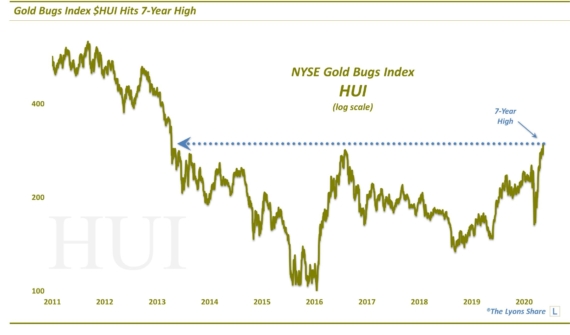Can Airline Stocks Get Off The Ground?

While the major stock averages recently buzzed all-time highs, airline stocks have dropped to 20-month lows; is there any hope for these stocks?
After today’s rally, most segments of the market continue to remain within arm’s length of their rally highs – and even all-time highs, for some. However, with the volatility of the past few weeks, it appears to us that the wheat is being separated from the chaff, to some degree. Presently Included among the chaff, i.e., the bad stuff, is the airline sector. For, as the major averages were doing a flyby of their all-time highs (please excuse the post’s plethora of unavoidable puns), the Dow Jones U.S. Airline Sector was crashing to fresh 1 ½-year lows.

For some reason, the airline sector has long been a source of mockery across the investment industry. Actually, the reason is probably because the sector essentially declined over the 12-year period from 2000 to 2012. However, everything cycles and airlines certainly are not immune to it, up or down. And in fact, if we scroll out just a bit, we find that as recently as January 2015, the sector was among the market’s hottest, actually scoring all-time highs during the month. That high capped off a 2-year run that saw the Airline Index gain more than 200%.
(Incidentally, as is often the case, the ETF industry did investors no favors by closing the marketplace’s only Airline ETF, “FAA”, in March 2013, just as the rally was lifting off – and launching a new ETF, “JETS”, in April 2015 near the top of the rally.)

So while the sector’s recent misfortunes are obvious, it helps to apply a little context and perspective to the situation. The reality is that the group has retraced just about 40% of the 2012-2015 rally, so it’s not the end of the world. Part of the ill feelings likely stem from the fact that the sector’s short-term travails are occurring even as much of the market is trading near its highs. Perhaps that’s no coincidence.
Consider one of the main impetuses behind the post-February rally – or at least one of its most publicized conditions: the rally in oil. The price of oil essentially doubled from February to June. Considering the fact that airlines are as negatively impacted by rising oil prices as any industry, their recent drop to new lows hardly seems like a coincidence. Likewise, when oil prices were plummeting from mid-2014 into early 2015, the Airline Index was tacking on about 60%. Again, hardly a coincidence.
Where does that leave airline investors? Are they relegated to cheer-leading lower oil prices if they are to have any hope of logging gains? Well, certainly that would help – and it does seem like a plausible scenario, at least in the shorter-term. However, if we scroll back on the Dow Jones U.S. Airline chart even further, to its inception in 2000, we find some potential reason for optimism, technically.

Taking this view, we see why, at least partially, the rally stopped in January 2015. It was bumping into its all-time high from 2001. Rarely do you see a market rally unabated for 2 years and – sustainably – break out to a new high without a pause. Indeed, as we mentioned in this post on StockTwits on January 23, 2015, some consolidation of the rally’s gains would be healthy prior to an attempted breakout. The index topped the very next day and has dropped ever since.

That said, there are potential positives in the manner in which the Airline sector has consolidated. First off, as we mentioned, the Airline index has remained relatively tight to its initial January 2015 highs. Yes, it has dropped some 27% and is hitting 20-month lows, however, it has retraced only a modest amount of its post-2012 rally. In the process, it has formed a potential “bull flag” as highlighted on the last chart. This is a formation whereby prices experience a tight, shallow consolidation following a rally. Typically, prices will resolve the pattern by breaking higher and resuming the prior uptrend.
Given the 3 waves down now within the consolidation pattern, the end of the pattern could be very near. And if this is indeed a bull flag, it could be setting up much higher prices, eventually. Considering the top of the bull flag equates to all-time highs, a break up and out of the flag would put the index into new high ground where there is zero turbulence, er, resistance.
So while airline stocks are one of the few sectors struggling to get off the ground currently, there is at least one potentially bullish interpretation of the group’s recent behavior. If the 18-month consolidation in airline stocks is a continuation pattern, they may soon be poised for liftoff – potentially aided by falling oil prices. Either way, if the airline sector is able to break out above the pattern, it could be all blue skies for this much maligned group.
________
More from Dana Lyons, JLFMI and My401kPro.
The commentary included in this blog is provided for informational purposes only. It does not constitute a recommendation to invest in any specific investment product or service. Proper due diligence should be performed before investing in any investment vehicle. There is a risk of loss involved in all investments.


